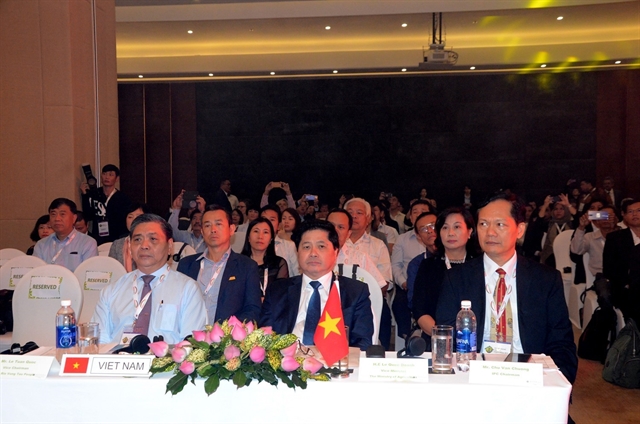 Economy
Economy


|
| Participants from Việt Nam and 25 other member countries of the International Pepper Community at the International Pepper Conference 2019 in the southern province of Bà Rịa-Vũng Tàu. — VNA/VNS Photo Hoàng Nhị. |
BÀ RỊA-VŨNG TÀU About 400 delegates from Việt Nam and 25 other member countries of the International Pepper Community are attending the International Pepper Conference 2019 in the southern province of Bà Rịa-Vũng Tàu.
At the three-day event, opened on Tuesday, participants discussed issues relevant to pepper production, processing and trading to better meet the global market’s demand.
The event features meetings of exporters and importers, meetings on cultivation techniques, exhibitions of exporting and importing companies, and field trips to pepper farms in the province.
During the event, the International Pepper Community will award five farmers who are recognised as outstanding pepper growers of 2018 by the International Pepper Community. Meanwhile, five companies will also be honoured for their innovation in pepper production and processing.
The conference takes place amid unfavourable factors facing the world’s pepper sector, including continually declining prices, global financial crisis, abnormal weather conditions, uncontrolled diseases on plants, consumers’ growing requirements, rising production costs and unpredictable price developments.
Việt Nam's Deputy Minister of Agriculture and Rural Development Lê Quốc Doanh said the country is currently the world’s biggest peppercorn producer and exporter with export volume reaching 250,000 tonnes, equivalent to 40 percent of the global figure.
In Việt Nam, pepper is mainly cultivated in the provinces of Bà Rịa-Vũng Tàu, Đồng Nai, Bình Phước, Gia Lai, Đắk Lắk, Đắk Nông, Quảng Trị and Kiên Giang. It is a source of livelihood for more than 200,000 households. — VNS




